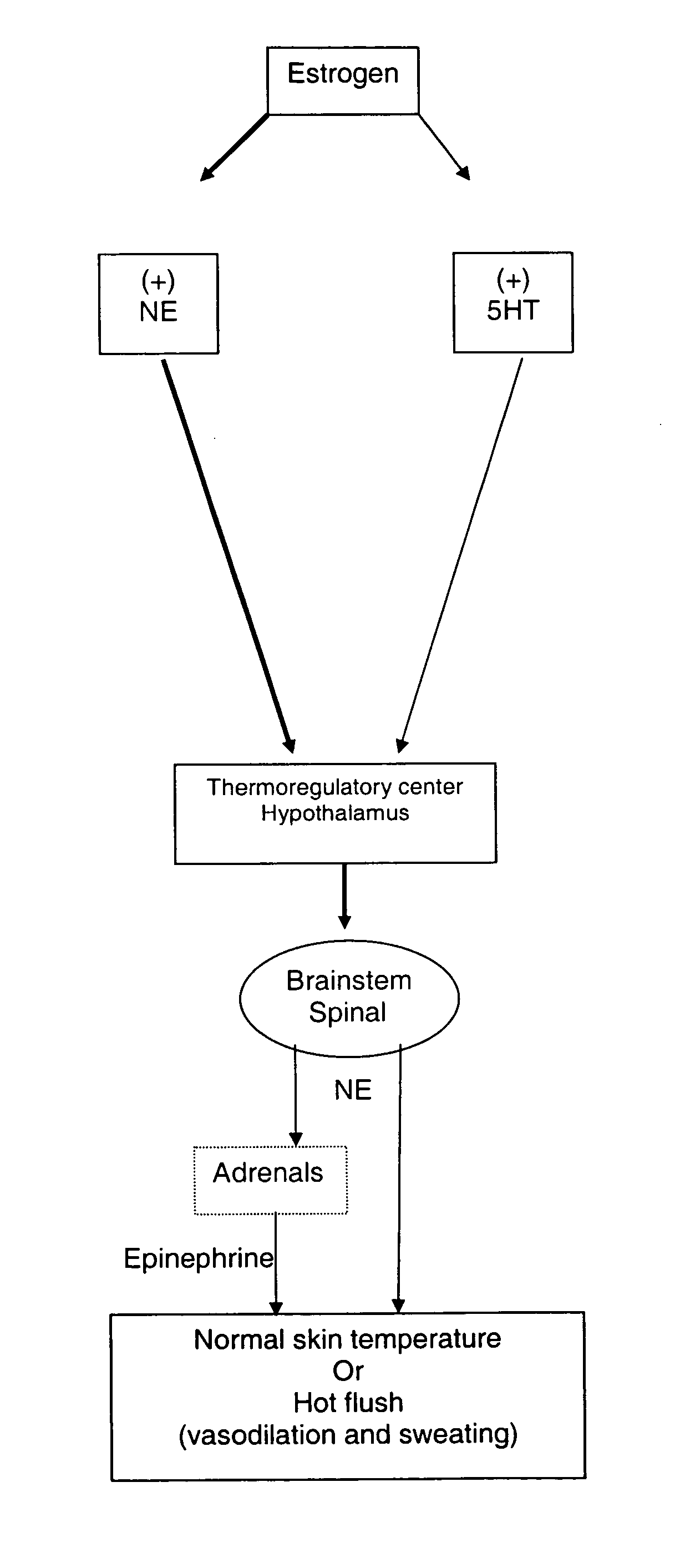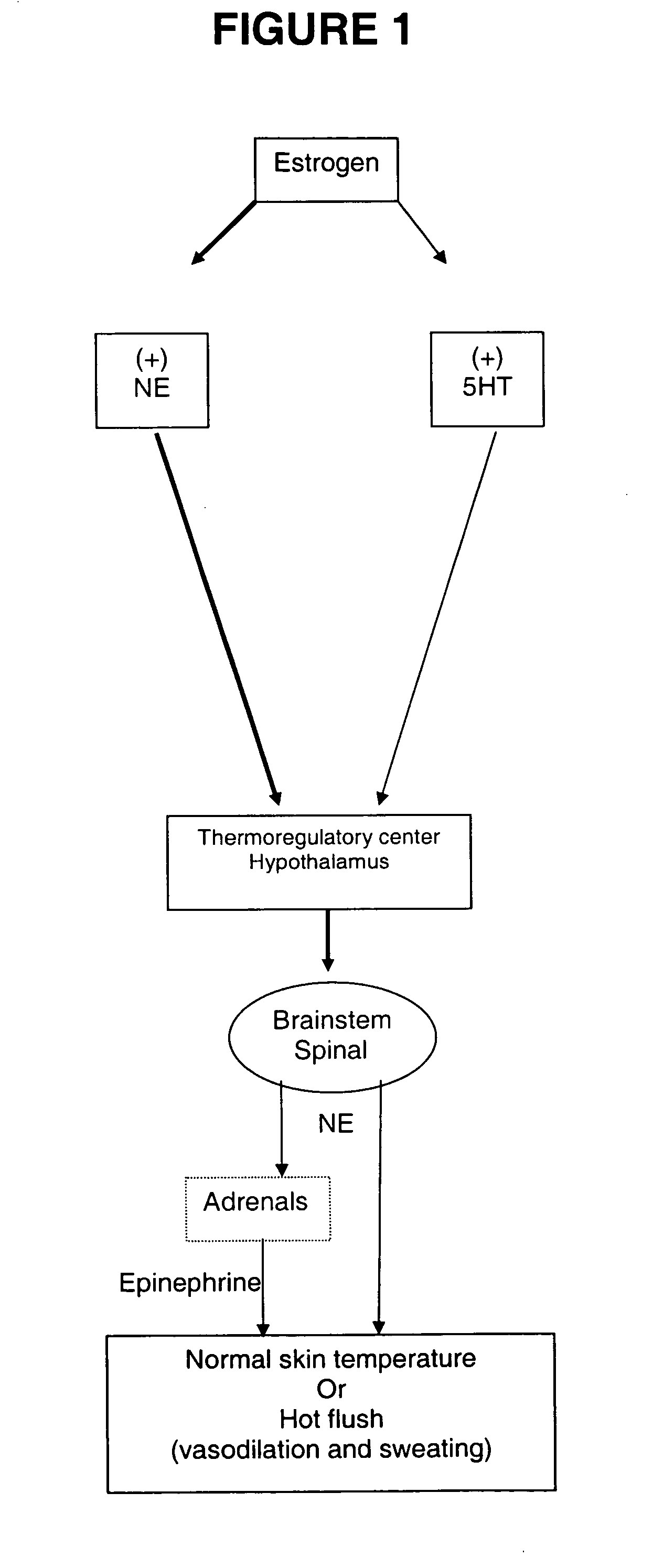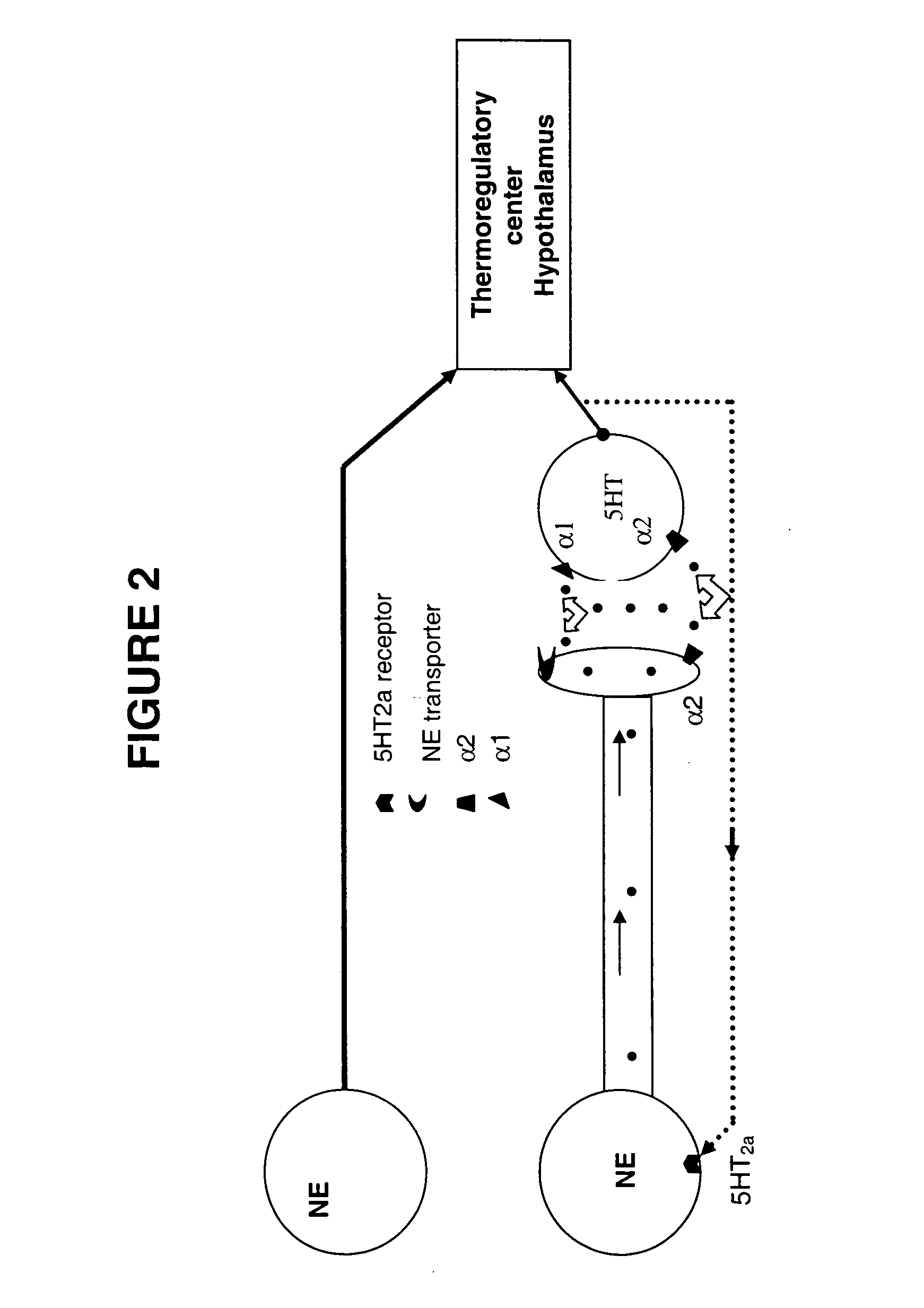Method for treating nervous system disorders and conditions
a nervous system and disorder technology, applied in the field of method for treating nervous system disorders and conditions, can solve the problems of affecting the normal functioning of the nervous system,
- Summary
- Abstract
- Description
- Claims
- Application Information
AI Technical Summary
Benefits of technology
Problems solved by technology
Method used
Image
Examples
example 1
Activity of Racemic 1-(3,4-dichlorophenyl)-3-azabicyclo[3.1.0]hexane and (+)-1-(4-methylphenyl)-3-azabicyclo[3.1.0]hexane at the Human Norepinephrine (hNET) Serotonin (hSERT) and Dopamine (hDAT) Transporters
Cell Lines and Reagents
[0103] MDCK-Net6 cells, stably transfected with human hNET [15] were cultured in growth medium containing high glucose DMEM (Gibco, Cat. No. 11995), 10% FBS (dialyzed, heat-inactivated, US Bio-Technologies, Lot FBD1129HI) and 500 μg / ml G418 (Gibco, Cat. No. 10131). Cells were plated at 300,000 / T75 flask and cells were split twice weekly. The JAR cell line (human placental choriocarcinoma) was purchased from ATCC (Cat. No. HTB-144). The cells were cultured in growth medium containing RPMI 1640 (Gibco, Cat. No. 72400), 10% FBS (Irvine, Cat. No. 3000), 1% sodium pyruvate (Gibco, Cat. No. 1136) and 0.25% glucose. Cells were plated at 250,000 cells / T75 flask and split twice weekly. For cell based assays, cells were plated in Wallac 96-well sterile plates (Per...
example 2
Telemetry Model
[0109] This model has been modified from a previously reported protocol describing estrogen regulation of diurnal tail skin temperature (TST) patterns (Berendsen, et al., European Journal of Pharmacology, 2001, 419(1): 47-54). Over a 24-hour period, intact cycling rats decrease TST during the active (dark) phase and TST remains elevated during the inactive (light) phase. In ovariectomized (OVX) rats, TST is elevated over the entire 24-hour period, thus the usual decrease in TST during the active (dark) phase is lost, thus, a compound's ability to restore this lowering of TST during the active phase was examined. A temperature and physical activity transmitter (PhysioTel TA10TA-F40, Data Sciences International) was implanted subcutaneously in the dorsal scapular region and the tip of the temperature probe was tunneled subcutaneously 2.5 cm beyond the base of the tail. After a 7-day recovery period, TST readings were continuously recorded for the remainder of the study...
example 3
Evaluation of racemic 1-(3,4-dichlorophenyl)-3-azabicyclo[3.1.0]hexane, racemic 1-(4-methylphenyl)-3-azabicyclo[3.1.0]hexane (bicifadine), and (+)-1-(4-methylphenyl)-3-azabicyclo[3.1.0]hexane, in the Spinal Nerve Ligation (SNL) Model of Neuropathic Pain
Materials and Methods
[0115] Animal maintenance and research were conducted in accordance with the National Research Council's policies and guidelines for the handling and use of laboratory animals outlined in the Guide for the Care and Use of Laboratory Animals. The laboratory facility was licensed by the United States Department of Agriculture and accredited by the American Association for Accreditation of Laboratory Animal Care. Research protocols were approved by the Wyeth Institutional Animal Care and Use Committee in accordance with the guidelines of the Committee for Research and Ethical Issues of IASP (Zimmermann, 1983).
[0116] Subjects. Male Sprague-Dawley rats (Indianapolis, Ind.) weighing 150 to 200 g at time of arrival, ...
PUM
| Property | Measurement | Unit |
|---|---|---|
| Fraction | aaaaa | aaaaa |
| Fraction | aaaaa | aaaaa |
Abstract
Description
Claims
Application Information
 Login to View More
Login to View More - R&D
- Intellectual Property
- Life Sciences
- Materials
- Tech Scout
- Unparalleled Data Quality
- Higher Quality Content
- 60% Fewer Hallucinations
Browse by: Latest US Patents, China's latest patents, Technical Efficacy Thesaurus, Application Domain, Technology Topic, Popular Technical Reports.
© 2025 PatSnap. All rights reserved.Legal|Privacy policy|Modern Slavery Act Transparency Statement|Sitemap|About US| Contact US: help@patsnap.com



